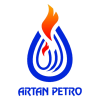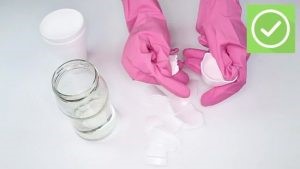


Plastics are made from natural materials such as cellulose, coal, natural gas, salt and crude oil through a polymerization process or multi-compaction.
About plastic
Plastics are derived from natural and organic materials such as cellulose, coal, natural gas, salt and of course crude oil.
Crude oil is a complex compound of thousands of compounds and needs to be processed before use.
Plastic production begins with the distillation of crude oil at an oil refinery.
This divides heavy crude oil into groups of lighter components called fractions.
Each part is a mixture of hydrocarbon chains (chemical compounds consisting of carbon and hydrogen) that differ in the size and structure of their molecules.
One of these sectors, naphtha, is an important compound for the production of plastics.
Two main processes are used to produce plastics – polymerization and multiple compaction – and both require special catalysts.
In a polymerization reactor, monomers such as ethylene and propylene bind together to form long polymer chains.
Each polymer has its own properties, structure and size depending on the types of primary monomers used.
Plastics can be classified into several types.
Learn more about plastics and their uses and benefits.
Plastics contain a large family of materials that can be classified into many different types.
In this section, you can learn more about the types of plastics and their applications and benefits.
Bio-based plastics are made entirely or partially from renewable biological sources.
For example, sugarcane is processed to produce ethylene, then it can be used to produce polyethylene.
Starch can be processed to produce lactic acid and subsequently polylactic acid (PLA).
Biodegradable plastics Biodegradable plastics are plastics that are broken down by microorganisms into water, carbon dioxide (or methane) and biomass under certain conditions.
To guide consumers in making decisions and ensuring the biodegradability of a plastic, global standards have been implemented, new materials have been produced and a compost logo has been introduced.
Engineering plastics show higher performance than standard materials, making them ideal for rigid engineering applications.
They gradually replaced traditional engineering materials such as wood or metal in many applications, because no
Not only are they equal to or greater than their weight / strength ratio and other properties, but they are also much easier to make, especially in complex shapes.

Epoxy resins have been around for over 50 years and are one of the most successful plastic families.
Their physical state can be changed from low viscosity liquid to solid with high melting point, this
This means that a wide range of materials are made with unique properties.
At home, you will find them in soda cans and special packaging, where as
Lining is used to protect the contents and preserve the taste.
They are also used as a protective cover on everything from beds to garden.
Chairs, office and hospital furniture, up to supermarket carts and bicycles.
They are also used in special paints to protect the surfaces of ships, oil rigs and wind turbines
Used against bad weather.
Expandable polystyrene, or EPS, is a widely used commodity polymer.
This material has been selected for more than 50 years due to its variety, performance and cost-effectiveness.
It is used in many everyday applications such as fish boxes, bicycle helmets and insulation materials.
Fluoropolymers due to their superior non-stick properties as a coating on cookware and as a dirt and stain
Used for textiles and textile products, are popular.
They are also involved in significant advances in areas such as aerospace, electronics, automotive, and industrial processes.
(Chemical and electrical sectors, including renewable energy), architecture, food and pharmacy, and medical applications.
The best member of fluoropolymers is PTFE (polytetrafluoroethylene).
Polyolefins are a family of polyethylene and polypropylene thermoplastics.
They are mainly produced from oil and natural gas through the polymerization of ethylene and propylene, respectively.
Their versatility has made them one of the most popular plastics used today.
Polystyrene is a synthetic polymer made from styrene monomer and is a liquid petrochemical.
It is a thermoplastic polymer that softens when heated and can pass through semi-finished products
Like movies and sheets turn into a wide variety of final articles.
Polyurethane (PUR) is a durable, flexible and durable material.
There are different types of polyurethanes that are very different in appearance.
They are used in a wide range of products.
In fact, we are surrounded by polyurethane products in every aspect of our daily lives.
While most people are not too familiar with polyurethane because it is usually behind the cover or
Other levels are “hidden”, it is difficult to imagine life without them.
The surfaces they make are “hidden” from other materials, making life difficult to imagine without them.
Polyvinyl chloride (PVC) was one of the first plastics to be discovered and is also one of the most widely used.
It is derived from salt (57) and oil or gas (43).
This polymer is the third most widely produced synthetic plastic polymer after polyethylene and polypropylene.
PVC comes in two main forms:
Rigid (sometimes RPVC) and flexible.
Thermoplastics are defined as polymers that melt and reshape almost indefinitely.
They melt when heated and harden after cooling.
However, when frozen, they become a glass-like thermoplasty and are prone to breakage.
These properties, which lend to the material, are reversible, so the material can be reheated, deformed and frozen.
As a result, thermoplastics are mechanically recyclable.
Some of the most common types of thermoplastics are polypropylene, polyethylene, polyvinyl chloride, polystyrene, polyethylene terephthalate and polycarbonate.
For more information on the latest news and our portfolio on Artan Petro Kayhan website
See.
Meanwhile, you, the regular companions of Design Pars, can follow Artan Petro Kayhan on her Instagram page. Instagram Artan Petro Kayhan
How to make plastic.
Production of General purpose polystyrene with different grades

info@artanpetro.com
Qom Shokouhieh Industrial Town, end of the second phase, Babaei Square, Babaei St., Alam al-Huda St. 1, No. 1331
+982533346396![]()
+982533346473![]()